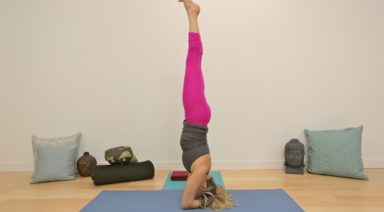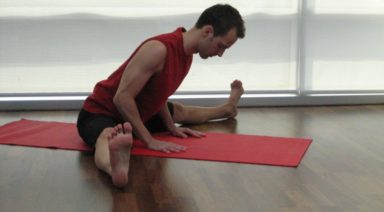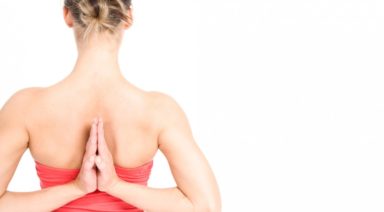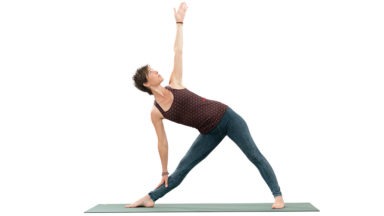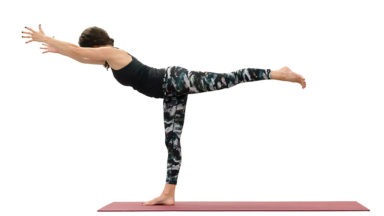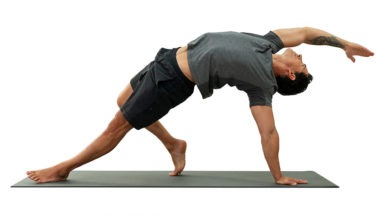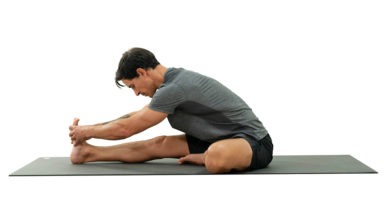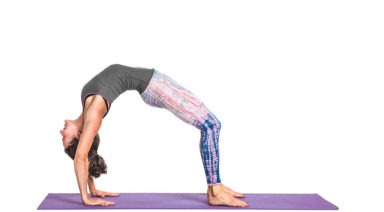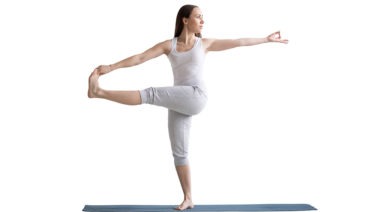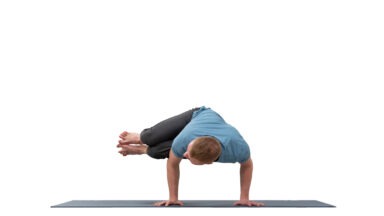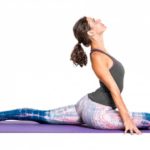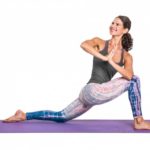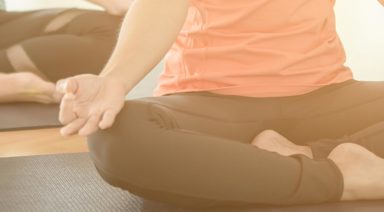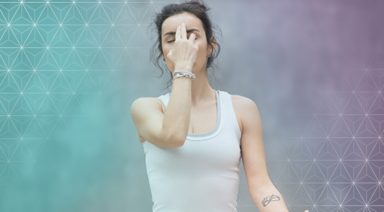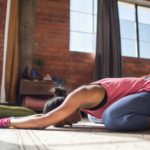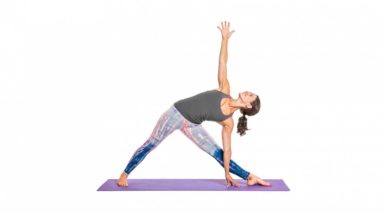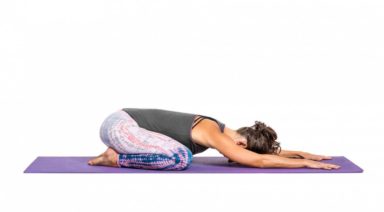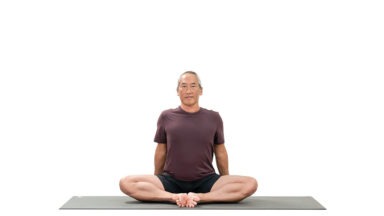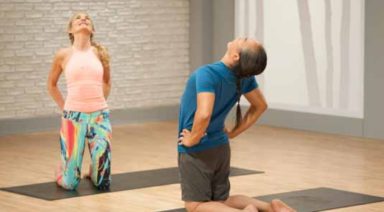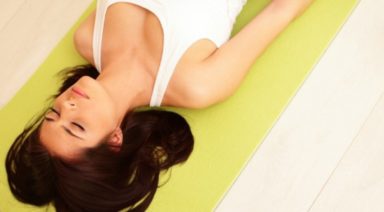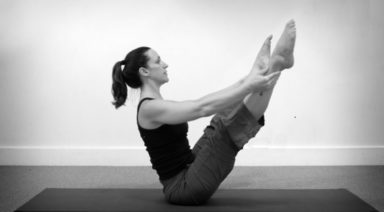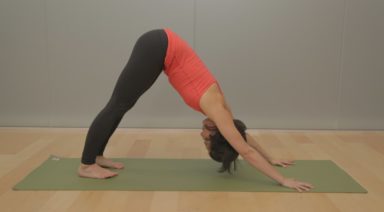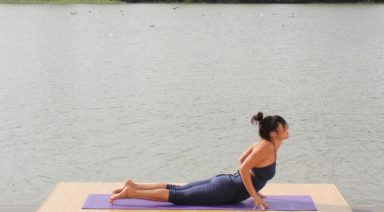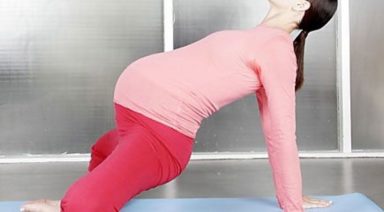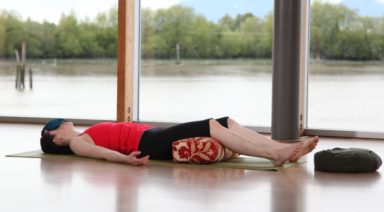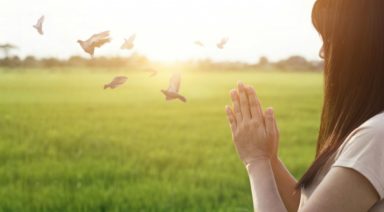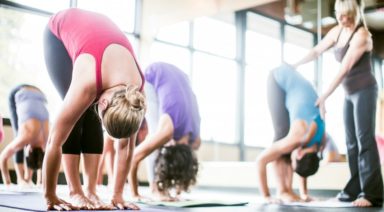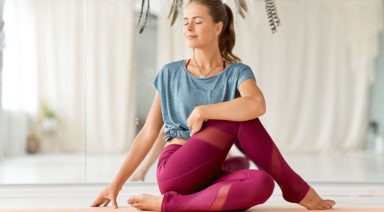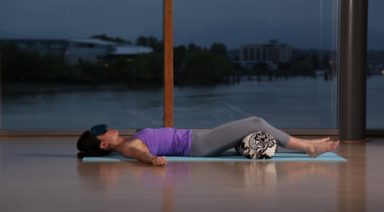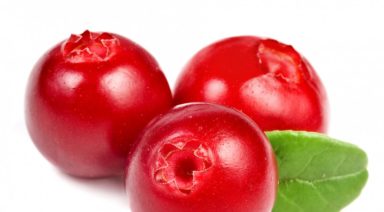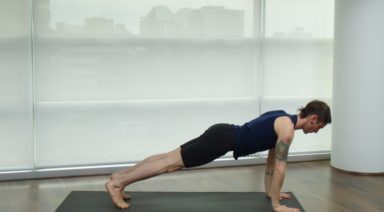Upper Arm Spirals in Down Dog
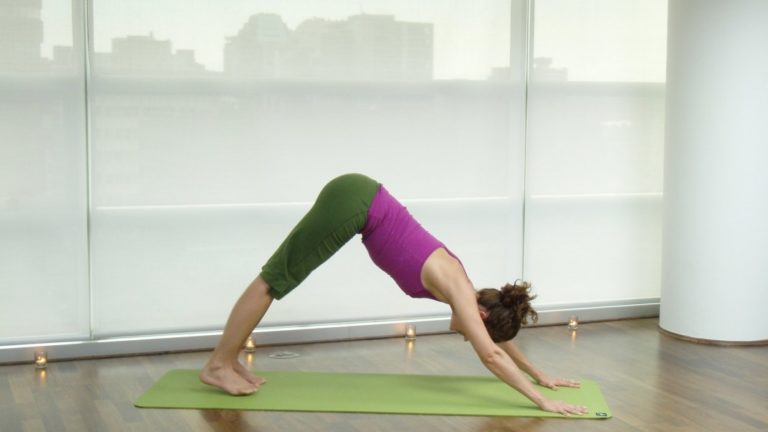
Downward Facing Dog pose (Adho Mukha Svanasana) comes across as basic forward bending Yoga pose – simple in its application and benefits. However, many yoga participants draw most of their attention to lower half of the body in achieving flexibility in the posterior lines (hamstring and calf muscles). The lack of attention on the placement and alignment of the upper body often dilutes the integrity and initial function of the pose.
Like all Yoga postures, Downward Facing Dog pose is meant to nourish the spine (and the energy channels traveling along with it) with a qualitative forward bend. In terms of being qualitative, this means the spine should enjoy renewed space, balance, and mobility. This includes all portions from the sacrum to the cervical spine (neck).
When one places all the emphasis on “pushing back” into the lower body’s rear line stretch, one tends to overuse the shoulder muscles (deltoids and supraspinatus). The unmindful contraction of these shoulder muscles draws the shoulder girdle (scapula bones) and the head of the humerus (upper arm bone) inwards towards the neck and ears.
The result of this inward motion of the shoulder girdle and arm bones is a crowding of the cervical vertebrae and the brachial nerve plexus. The brachial plexi are complex branches of nerves traveling from the neck and over the collar bone regions. This branch of nerves gives rise to virtually all the nerves that innervate the upper limbs.
This inwards crowding from the shoulder girdle also transmits a closing motion of the upper trapezius muscles (upper back) that often mirrors an unnecessary contraction of the trapezius and other extensor muscles along the back of the neck. This echoing contraction of these muscles causes the head to lift and move into a back arching motion – counter productive to the aim of being in a forward bend. The neck also does not take advantage of gravity and the natural elongation of the vertebrae that occurs went the head floats towards the ground.
Take note the next time you perform Downward Facing Dog pose. Are the shoulders pulling into the neck? If so, also notice the usage of your hands, the alignment of the head, and the relative situation of the shoulder blades to the ribs. With this awareness, you can then explore upper arm spirals to improve the quality of the posture.
Applying Upper Body Integrity:
An effective and subtle engagement of energy in the arms in the form of spirals can add significant space and mobility into the neck and upper spine. This space and integrity immediately transmits into more stability in the shoulder girdles and balanced loading of the shoulders and hands-together creating a more restful, qualitative Downward Facing Dog.
Spiral 1: Forearms
As you set up your pose, position your hands roughly the distance of the outer edge of the shoulders (people often have the hands inside the width of the shoulders adding to the crowding of the neck). Feel the fingers lightly spread, but not so much that you feel the tendons in the hands shortening vigorously. Line up the middle and index fingers forward so the hand is neutral with the wrist and forearm (and not turned inwards or excessively outwards). Then gently ground down through the index finger as though you are reaching out through that finger-tip. You will feel a slight pressure into the index finger pad as well as a subtle INWARDS rotation of the forearms. This is spiral 1. With this energetic spiral, you will draw compressive loading away from the outer wrist tissues and distribute the weight more evenly into the finger pads.
With this spiral, one MUST then apply spiral 2. Without spiral 2, the inwards rotation of the forearms, rotates the upper arm inwards as well adding even more crowding and compression into the neck and brachial plexi.
Spiral 2: Upper Arms
With the lower spirals set, visualize the shoulder blades hugging the ribs like suction cups and sliding up and away from the ears. A beautiful muscular connection occurs underneath and around the shoulder blades building strength and integrity for other poses. You will feel a very minute, but effective OUTWARDS rotation of the upper arms. Again, this is subtle. If it is overdone, this upper spiral will pull against the forearm spirals sending pressure into the outer wrists.
With this upper spiral, the trapezius muscles set over the shoulder and upper back spread like wings and the brachial plexus regions become more open. The echoing of the trapezius and extensor muscles dissipates allowing the head to release and flow away from the pelvis. The spine enjoys freedom and balance, and the pose shifts from a pushing ego to a therapeutic expansion.
A good learning tool for these spirals is to stand near a wall and to reach your arms up as high as you can on the wall. Like Downward Facing Dog, separate the hands and fingers. To demonstrate how Downward Facing Dog is often done incorrectly, slide the hands up as high as you can. Feel the tightness moving into the shoulders, trapezius muscles and neck.
Now, set your forearm spirals. Ground down and out through the index fingers. Notice the rotation of the forearms as well as the balance flowing into the surface area of the hands. From there, engage the muscles within the shoulder blades. Slide your shoulder blades down. Your hands will naturally slide down with the shoulder blades. Feel how easy it is to lengthen and open the tops of the shoulders and back with this shoulder girdle adjustment. Also, feel how subtle the upper arm naturally turns outwards. The advantage of this wall exercise is you can learn to do these spirals and feel the subtle changes without the loading forces of gravity on the shoulder and arms when in Downward Facing Dog.
The key word in these spirals is “natural”-not forced or exaggerated. A final sensation to become aware with these spirals is the reduction in shoulder muscle contraction combined with an additional use of the hip flexors. The shoulders must reduce their hold to allow for the spirals to occur, therefore the hip flexors (iliopsoas and rectus fermoris) compensate and engage. This engagement of the hip flexor muscles improves the forward bending motion at the hips, generates a more effective lift of the sit bones (ischial tuberosities), and creates a more effective expansion of the hamstrings.
In summary, play with the spirals together in your Downward Facing Dog pose. One spiral must be accompanied by the other. Maintain a holistic approach keeping the spine your first priority. Let this holistic intention then flow out through the pelvis and shoulders ending with the limbs. Click here to read more about spirals for the wrist and other ways to protect the wrist joint in Downward Facing Dog pose.
Yoga Anatomy: Avoid Hand and Wrist Injuries
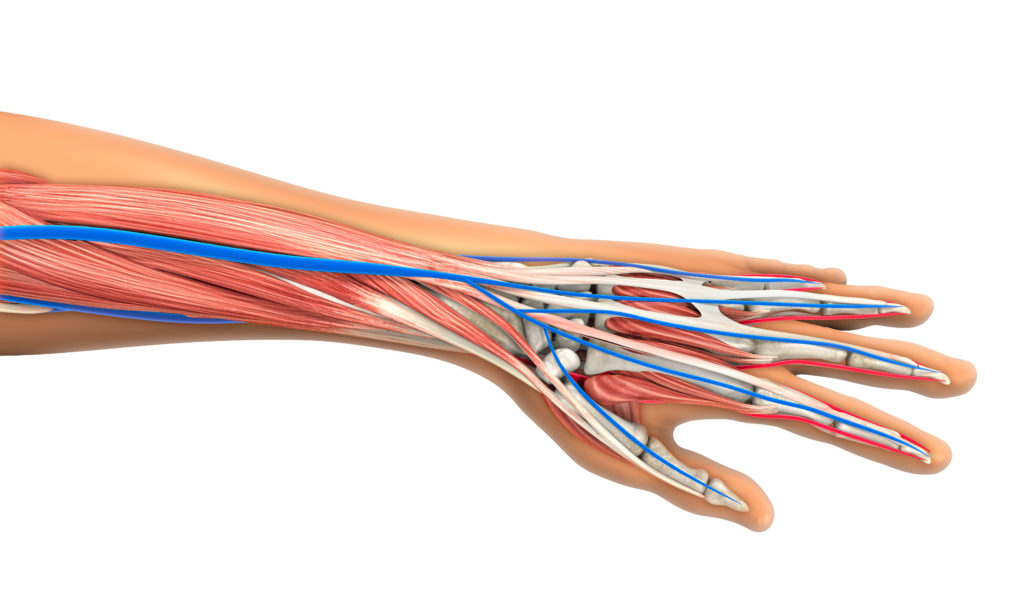
Think of the number of times your hands and wrists are connected to the earth and carry your weight in a typical Hatha Yoga practice. Like our feet, our hands frequently become a crucial foundation from which our postures build and express themselves. Sustaining mindful engagement of our hands will support a life-long practice that is free of negative stress conditions and injuries to the wrist. Let’s look at some anatomical aspects to give us empowerment and motivation to explore our unique positioning and engagement of the hands and wrists.
The wrists are formed by our 2 forearm bones (the radius and ulna). They meet dat the wrist joint where there is cluster of small bones (carpal bones). The carpal bones connect with 5 long bones (metacarpal bones) that make up the palm of the hand. From there, the metacarpal bones connect to the bones of the fingers (phalanges). The carpal bones form a tunnel through which tendons and nerve tissue pass to service the hand and fingers. One primary focus of hand engagement is to avoid collapsing into this tunnel and keeping excessive pressure from cascading into that track of muscle and nerve tissue.
One primary focus of hand engagement is to avoid collapsing into this tunnel and keeping excessive pressure from cascading into that track of muscle and nerve tissue.
Another key structural area to consider is the joint connection between the ulna and the carpal bones. If you turn your hand open (supination of the forearm and wrist), your ulna is the inside forearm bone (medial side). Unlike the radius (lateral or thumb side) that has a direct joint connection to the carpal bones, the ulna has indirect joint connection. Instead, there is a piece of fibrocartilage (designed to absorb stress forces) between the ulna and carpal bones along with a network of supporting ligaments – this area is called the Triangular Fibrocartilage Complex. When we look at the overall differences in joint connection, the radius also has a larger joint surface compared to the ulna. This gives indication that most people are best served to deliver a greater proportion of their force and energy through the radial side of the wrist than through the ulnar side.



